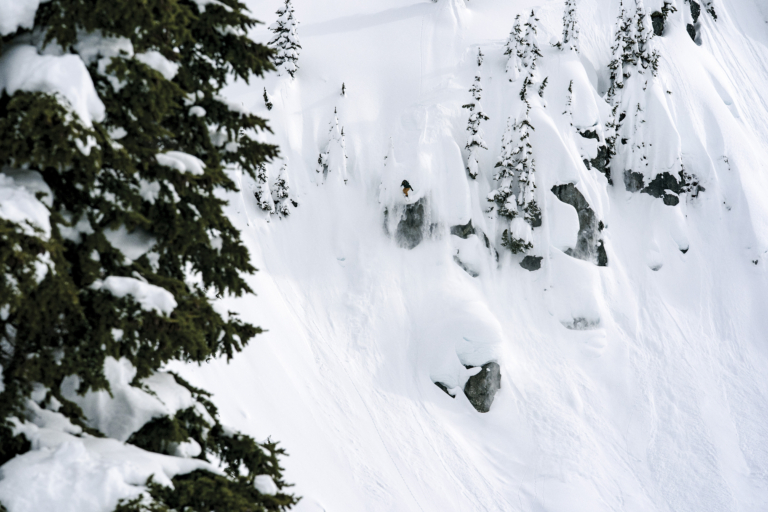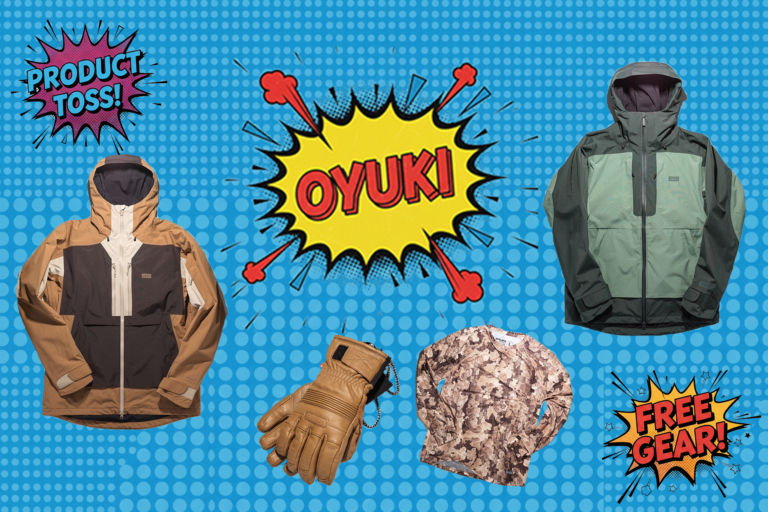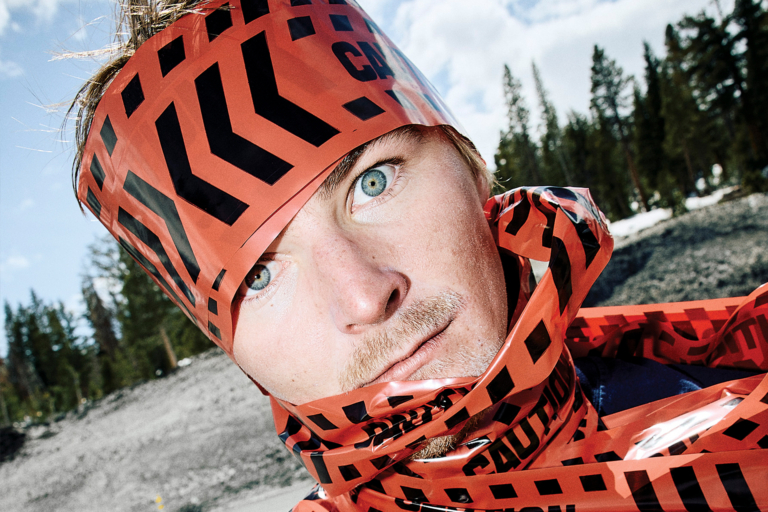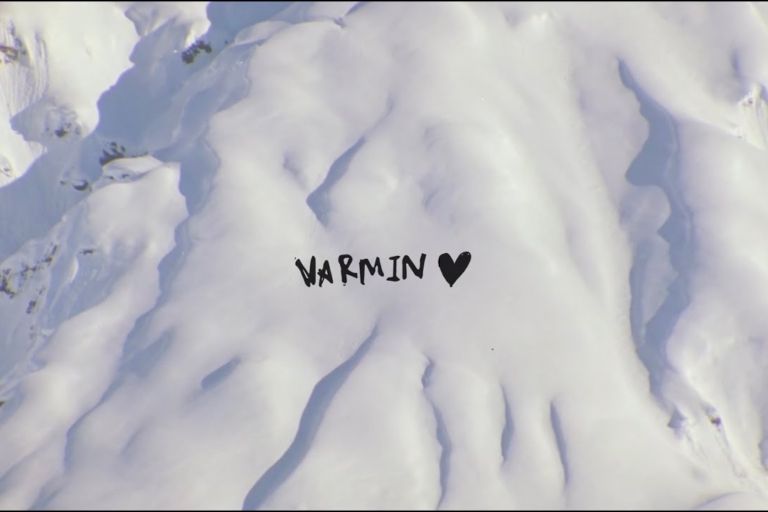words: Melissa Riitano
photos: Melissa Riitano, Amanda Hankison, and Dustin Lalik
Just about a month ago, I had the privilege of attending Risk Maturity, a week-long course that teaches backcountry safety, first aid, avalanche rescue, and so much more and is organized annually at the start of winter by Pat Moore and John Buffery. As we get older as a sport and wiser as a community, we learn from past experiences both positive and negative. The course is hosted by Baldface Lodge in British Columbia. This remarkable place holds magic in their mountains and in the very walls of the lodge. You can feel the love that went into every bit of Baldface. A ten-minute heli from Nelson, BC places you at the top of a secluded mountain where your only tie for a line of communication to the outside world is a blinking light in the distance. It feels peaceful to be that far from the rest of the busy world. And don’t get me started on the food up there–it’s phenomenal!
Before zooming up to the mountains, most course attendees did a two-day first aid class with Peak First Aid in Nelson. During long days, starting at 8am and running until 3pm, we spent time learning various ways to save a person’s life and what supplies and tools we should carry in our backpacks in addition to avalanche gear. We covered everything from stopping massive bleeds, stabilizing broken bones, head trauma, CPR, and preventing hypothermia. One thing that really stuck out in my head was when we practiced a life-threatening bleed (during these classes you execute faux scenarios in order to learn what to do). Our “patient” was complaining about sharp back pain. Without this training, I would have gone right to addressing their back, but with first aid training, you always take steps to check the airway, then breathing, then for massive bleeds. This person had a massive bleed on their leg. It was crucial to stop the bleed first, because the patient could have gone into shock or much more easily become hypothermic and died.
The reality hits hard that the people we would most likely be saving are those closest to us. This sank in more and more throughout the journey of this course. It became abundantly clear just how vital this knowledge is for everybody in your crew to have, along with the gear and practice. After the two days of intensive training in rescue scenarios, everybody departed with more knowledge and confidence. One big win was seeing how practicing cut down our time addressing bleeds, broken bones, unconscious patients, and so on. We went from taking an hour to work through each rescue scenario, to being able to save our patient in thirty minutes. Practice makes improvement!
Departure day! Most of the people I had been traveling with and myself were first-timers to Baldface. The excitement in our Airbnb was palpable. We got to the hangar, where you depart for Baldface, at 1pm, watched a short helicopter safety video, then boarded the heli and headed up to the lodge, group by group. We were the last to go, getting slightly nervous as the weather steadily rolled in. Finally, we made it to the top with lots of bumps and swings along the way. Immediately we were all spoiled. Bags were already in our rooms or chalets, and there was hot soup awaiting our arrival. I’m still daydreaming of the daily 3:30pm soup. After settling in, all the Risk Maturity attendees gathered into the main lodge for the first of many late-night chats with the guides and our peers.
These after-dinner discussions ranged from risk management, to reading the snowpack, weather, human factors, and avalanche case studies. John “Buff” Buffery, legendary guide and founding member of Baldface, kicked off the first discussion. He talked about what risk means and not necessarily seeing it negatively. He used the words “risk” and “hazards” in a particular way. Risk is the relationship between the hazards and yourself, specifically in a backcountry setting. The hazards are the dangers, and the risk is how the dangers might affect you. Risk was more like the calculation to manage those dangers. Each person will have different risk tolerance. My tolerance will differ from that of another person, say Travis Rice. Travis was prime example of Buff’s next point, risk can lead to opportunity. This is how the Natural Selection was born. Because of the proper risk management and assessment, an event like that is possible. I wish I could paraphrase all of the wisdom we learned from this discussion alone. The last thing I will share without writing a novel: Have a plan. Know what you are getting into, what the hazards are, and manage the risk. (And if you want to learn more, an AIARE course is a great place to start.)
Day one started off at 7am with breakfast, and then we went right into a refresh on working with our transceivers. How a transceiver functions and how to search for single and complex burials. Everybody in the lodge was fully attentive, even the most seasoned vets–there can be no ego when approaching anything this serious. We were then divided into groups dictated by past attendance and experience. It was the perfect way to meet everybody where they were and give ample time to dust off the cobwebs. My group was the newest to attend the course. We started slowly with a single burial with one searcher. Then we moved on to a double burial and then to a more complex situation with two searchers. The last rescue scenario of the day was a deep burial, something we all hope to never encounter. This is where a person is buried 6 plus feet. The odds of surviving a deep burial are low. The big key to avoiding this is choosing terrain wisely to avoid terrain traps, which is anything that could avalanche where the snow can stack up at the bottom, like a gully or a steep slope to a sharp flat. Our crew of four was gassed after digging down that far. I will always be aware of this when choosing terrain.
After a long day, we all changed into some dry, comfy clothes and got warm soup in our bellies. The whole crew once again settled in to learn from each other. That evening, Robin Van Gyn led a discussion on human factors and how they play a role in our decision-making in the backcountry. She structured this talk via the acronym FACETS and the dangers of falling into a heuristic trap. What is a heuristic trap? When a rule of thumb gives a grossly inaccurate perception or a hazard.
FACETS stands for:
Familiarity – “We’ve hit this a million times.”
Acceptance – feeling the need to prove yourself
Commitment – not committing to your goals, going when the conditions are still hazardous
Expert halo – false confidence from informal leaders
Tracks/ scarcity – “We have to be the first out there.”
Social facilitation – outside pressure to push it
Robin talked in-depth about these categories and ways to recognize these traps. One big takeaway was creating a collaborative culture where everybody has a voice; everyone from the most experienced to the most beginner needs to have an opinion. Additionally, there are a lot of extra pressures we put on ourselves as athletes. After Robin’s presentation, a discussion sparked about instances that our peers have experienced these human factors: pressure to film a part, the money invested into a trip, not wanting to look like a rookie, or not letting anybody down, were just a few of the things discussed.
Every night after dinner, an athlete attending would talk about a case study of an avalanche they had been involved in and what factors contributed to getting in that situation. Everybody listened and learned without judgment. It takes a lot of courage and humility to admit where you could have made better decisions. Austen Sweetin was the first to start off these case study discussions. You could see the nerves and emotions he was feeling when he shared his experience. In his accident at Mt. Baker, Austin talked about how FACETS played into his decision-making that day. He was at his home resort and had ridden that area many times (Familiarity). There was a sense of needing to be the first to the zone before the locals to get a shot in the fresh snow to film (Tracks/scarcity). All the locals were hooting and hollering at the top before he dropped in (Social facilitation). These were just a couple that he discussed. The next night Chris Rasman presented. He shared a similar experience of falling into a heuristic trap, being with a new crew in a coveted area that he had never been to. Both he and Austen faced a lot of external pressures from those human factors. However, in both cases, they made a ton of decisions correctly. They both made informed decisions with the feedback the snow was giving them. They looked at the weather. Both crews were prepared for emergencies. There are just some risk factors that are random unknowns. Bryan Fox shared a similar story but avoided a deadly avalanche with help from Buff. Bryan’s case study was an eye-opening example of going with your gut and always checking the snowpack.
Mikey Ciccarelli and Sean Miskiman also presented to the group. Their case study didn’t involve anybody they knew. They heard somebody yell, “Avalanche!” close to where they were snowboarding. They raced over to help and came upon a group of frantic guys too panicked to find their friend. Mikey and Sean quickly got a signal on their transceivers and headed off the rescue. The man was blue in the face after digging him out. Mikey cleared the snow from the man’s mouth and he let out a gasp of air and smiled. He was miraculously pretty unharmed. The whole room agreed that these two were heroes! Both red in the face, they humbly denied the fact that without them, this man wouldn’t be alive.
The last night, we listened to a case study about a situation we all know the tragic outcome of. Ken Wylie, an experienced guide and educator, humbly shared what went wrong that season and led up to that day. An avalanche occurred, burying Ken and twelve others. Taking the lives of seven people, one of those being Craig Kelly. You can see the pain Ken still feels as he recounts the decisions made–of course, not all his fault–and the aftermath of this tragedy. Hearing Ken speak really drove home the consequences that can happen. Tears were shed throughout the lodge, but there was no judgment or blame. Only space for learning. You could feel the gratitude in the lodge for Ken sharing and being so vulnerable of his account of that day and how he has been finding healing.
During Risk Maturity, our days were jammed-packed, to say the least. We practiced working with ropes for crevasse rescues and building anchors for rappelling with just the snow and snowboards. In addition, we practiced various accident scenarios with injuries. The blueprint for these was finding and unburying the victim, using first aid to find and address injuries, and getting the person out of the backcountry with our own supplies. It sounds so simple on paper, but even practicing these, you could feel your adrenaline start to kick in. It’s important to note, we practice these skills in hopes of never needing them but to be prepared if the worst should happen.
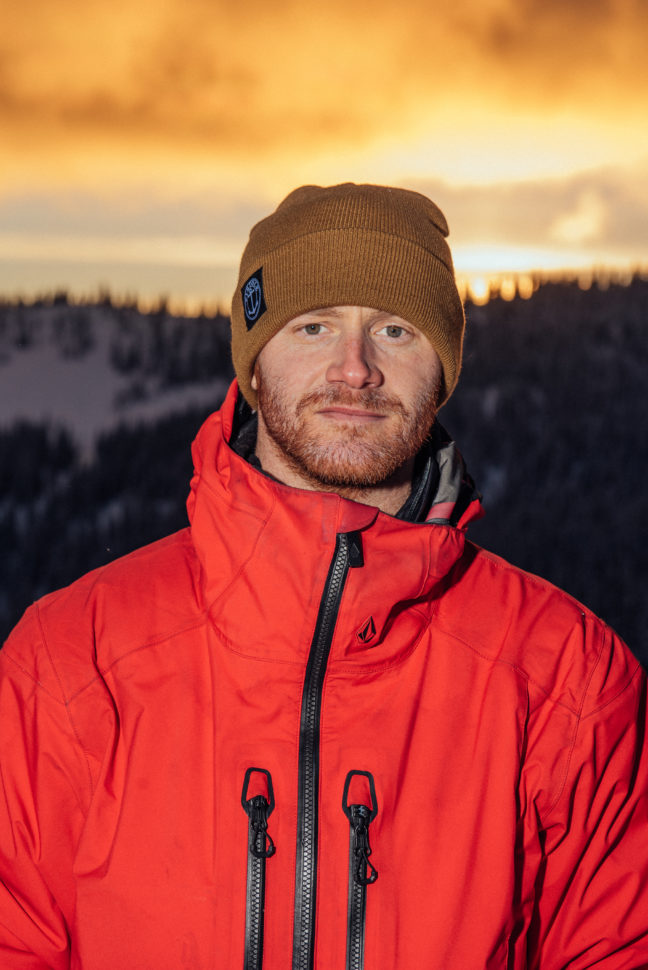
The last night we were at Baldface, I sat down with Pat Moore to talk about the origins of the Risk Maturity course.
For those that don’t know, why did you feel compelled to start this course?
Pat Moore: Jeff Pensiero and I were talking here at the bar. I think it was during Ultra Natural. We talked about experiences we both had in the backcountry, how there is no industry standard or one place to learn about the backcountry, and how there are a lot of close calls in our industry. That summer, we put together a plan and tried to make it happen. It didn’t work the first year, but Jeff changed up his plans the second year. He set it up as a soft-opening for all the employees. By doing that, we made attending as cheap as possible. Anytime people ask me about this class, I put the attention onto Jeff and Buff. I feel like I had little to do with the course. It really came down to the ambition of Jeff and Buff. They had the resources to use and share.
That just about answers my next question, why is Baldface the place you landed on for this course?
Baldface is just such an incredible place, especially in snowboarding. Craig paved the way for all of us. The guides here are some of the first people who pushed the envelope for snowboarders to be considered professionals in mountain culture. When Buff was getting started, you had to be on skis to become a guide. He, along with others at that time, pushed that boundary to show that the snowboard community has a place in the mountains. Long story short, Baldface feels like ours.
Was there something in the early years of this course that you did, but now you realize it wasn’t as important? Or did you guys feel like you were on the right track?
I’d say we were on the right track from the beginning, but the first year or so, we were more focused on how guides trained. I think that had value to show how the operation works, but wasn’t as applicable to a professional film crew. So, over the years, we just slightly changed the class to focus on how pro riders film and navigate in the backcountry.
More like real-world application of the skills while dealing with all other pressures.
Yeah, definitely. I’d say the number one thing we added since the beginning is first aid. That has been a game-changer. We had Dr. Mike give a presentation one of the years we didn’t have first aid. He was talking about an avalanche scenario. “You dig somebody up. What’s the first thing you do?” No one knew. The night after that presentation, Mike said, “You guys have to get first aid training. All of the avy stuff is awesome to learn, but if you’re digging somebody out of an avalanche, you will most likely be doing first aid.” Doing first aid and extractions has become a huge part of the class.
What is the overarching goal you all want to achieve with Risk Maturity?
You can’t truly appreciate the risk you are taking until you understand the hazards. Buff, in his presentation, is very specific with those words: risk and hazards. I personally want to see the next generation of snowboarders come up and have successful careers, and not be as naive as I was.
I can’t thank Pat, Jeff, Buff, the amazing guides, and all of the staff at Baldface enough. Risk Maturity is so much more than just an avalanche and first aid course. We really listen and discuss ALL of the factors at play. In addition, the mentorship from the guides and our peers provides invaluable information.
On the last day, everyone gathered together at Craig’s Kelly cross. I felt a wave of gratitude and emotion as I approached. I’ve only seen photos of this tribute, but standing there surrounded by friends was a whole different feeling. Joaquin Klein, another incredible guide, spoke beautiful words about the magic we all feel from the mountains and to honor ourselves, each other, and Mother Nature. Hugs were shared, and slowly the group began to descend back to the lodge, where we hurried around to pack and get on the helicopter back to Nelson. We may have all gone our separate ways from our tiny little perch on that mountain top, but will always feel connected through this piece of wood strapped to our feet.



























